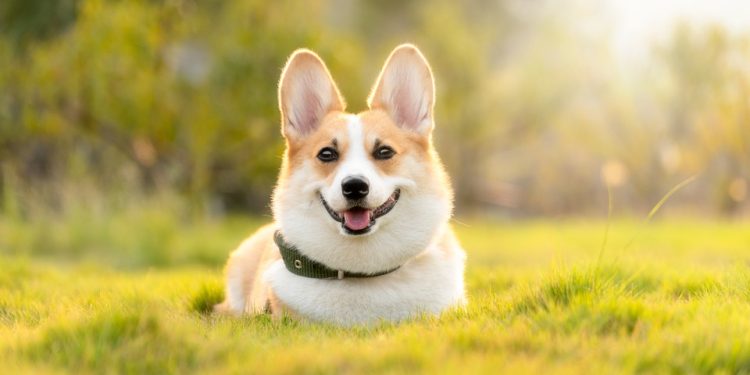Guest Blogger, James Brereton, a lecturer and course manager for Zoo Biology and Animal Science at University Centre Sparsholt, lends his expertise to our latest blog. Collaborating with him is Rachel M Smith, an experienced Zoo Keeper currently based at Paulton’s Park in the UK. Rachel is an alumna of UC Sparsholt, holding an MSc in Applied Zoo Biology and a BSc (Hons) in Animal Management, with a particular focus on Evidence-Based Husbandry.
Introduction
Imagine the scene: you’re off to do your normal keeper rounds, which includes feeding a mob of meerkats (Suricatta suricata). Today is live-food day, and you go to scatter a handful of mealworms (Tenebrio molitor) throughout the enclosure. While scattering the food, you notice a few of the mealworms are curled up and blackened.
So is there a welfare issue? A shrivelled, dead mealworm is a common sight for anyone working with live-food, and yet we rarely question why or how the mealworm died. To find a shrivelled, dead meerkat, by contrast, would be unthinkable.
Figure 1. The sun beetle is commonly kept, both as an attractive beetle species, and also as a live-food in grub form. Research has shown that this species seeks out warm, sunny spots, and this may be linked to metabolism and basking.
Invertebrates and the law: are they protected?
Legally, invertebrates are rarely afforded the same protection as vertebrates. In the United Kingdom, for example, only a minority of invertebrate taxa are afforded legal protection. The Animal Welfare Act (2006) and the Animal Welfare (Sentience) Act, affords the same protections onto “decapod crustaceans and cephalopod molluscs” (that is, lobsters, crabs and octopuses) as it does vertebrates, protecting them from unnecessary suffering. Other invertebrates are beyond the law, so to speak.
The development of welfare legislation seems like an obvious next step for preventing animal cruelty. A quick amendment could be made to the Animal Welfare Act, to change definition of ‘animal’ to include animals that lack a backbone, surely?
If invertebrate welfare legislation were ever to be passed, things would get tricky. The keeping of captive amphibians would be effectively called to a halt, as these animals are dependant on live food, like crickets (Gryllus spp.) and locusts (Schistocerca gregaria), for their nutrition. The ethics of fishing would be called into question, as would gardening and flea treatments for pet dogs (fleas are, after all, insects!) If invertebrates were afforded the same legal protection as vertebrates, it would be difficult to justify using even a dewormer on account of unnecessary suffering!
Perhaps, then, we’re not quite ready to afford legal protection for invertebrates to the same extent as we do vertebrates. But does this mean that we should just ignore invertebrate welfare entirely?
As invertebrate keepers, we’d like to think we take good care of our invertebrate charges. This is shown in good enclosure design that takes natural history into account, and research into nutrition. Some invertebrates, like tarantulas and scorpions, can live years or even decades, making good husbandry for these species even more important. But the level of care differs between taxa: live food species like crickets and mealworms are less likely to receive the five-star treatment. But it’s a start, and it shows that there’s interest in keeping invertebrates in better conditions.
So why care for invertebrate welfare?
There are several key reasons why we should care about invertebrates that extend beyond legal protection:
- Good welfare = good nutrition. We know that invertebrates are commonly bred as a food for other animals (and increasingly for human nutrition too!) Incorrect environmental parameters can increase the mortality rate of your stock, meaning that you have less food for your other animals. Good environmental conditions, on the other hand, can drive invertebrate growth whilst also improving nutritional value, meaning you have more, and healthier, food to provide for your insectivores. With a bit of care and attention to natural history, these animals can be bred relatively easily, allowing you to save money on live-food orders.
- Health and lifespan. Better conditions for your invertebrates could mean an extended lifespan and fewer health complications. We know that stressful conditions can dampen the immune system across a wide range of species: this leads to greater susceptibility to diseases which may shorten an animal’s life. For example, the over-cleaning of live food stock like crickets is known to be incredibly stressful, and leads to a much higher death rate than if you clean their set up just once a week. Additionally, providing our live food with the correct food themselves is vital. A good diet not only increases their health but reduces loss of stock. Crickets, for example, are known to turn cannibalistic if not provided with a source of protein, while mealworms kept on a bran substrate will eat that rather than the food they are provided, reducing their nutritional value.
- Ethical obligations. While there remains debate as to whether invertebrates can suffer (by the definition of experiencing suffering both as a physical sensation, and as an emotional/psychological one), we know that they can experience stress, and research is starting to show that arthropods, molluscs, and annelids may be able to feel pain. Nociceptors (receptors that detect noxious, painful stimuli) appear in many invertebrates, meaning that while the pathways are different to those seen in mammals, it is therefore likely that at least some invertebrates are able to experience pain, or a similar sensation.
Regardless, why should invertebrates not be afforded the same duty of care that we give to the other animals in our keeping? Perhaps we put less thought into the care of our invertebrates is because the majority of them are kept off show. Indeed, in some zoos, the only invertebrates at the collection are those kept off show to feed other animals. These invertebrates are often kept in sterile, unnatural enclosures with limited opportunities for natural behaviours, and offered a limited or even unsuitable diet.
Maybe it’s the longevity of invertebrate species that reduces the effort put into their care. While some invertebrates can live for years, the majority kept in zoos are more likely to have a lifespan of months, and those kept for live food arrive at a zoo may last less than a week. But does an animal you know will only be in your collection for a week have any less right to the correct environmental conditions, variety in diet, or even enrichment, it would get if it was to live at the zoo for a decade or three?
Figure 2: Death head cockroaches are a species often kept on show and as a live food species. They are one of the few live feed species that have a British and Irish Association of Zoos and Aquariums (BIAZA) husbandry care guideline to their name. As of January 2025, yellow mealworms, black crickets, and desert locusts have join that list. The release of these husbandry guidelines will start to improve the welfare of many live food species and invertebrates in our care.
How to measure invertebrate welfare
Clearly, then, there are good arguments for considering invertebrate welfare, including those kept for live food! But how do we actually assess invertebrate welfare? Here, we find ourselves faced with challenges. We know that welfare assessments can be challenging, even for commonly kept mammal species! To add complexity here, we haven’t done many initial studies on invertebrate welfare, which means we don’t always know what good welfare looks like, at least not for specific species. While a handful of studies are available for specific taxa (see Free and Wolfensohn’s work with cockroaches Gromphadorhina portentosa, and Brereton and Brereton for sun beetles Pachnoda marginata peregrina), most of our welfare assessing will need to be using general tools.
The Five Domains model has emerged as an excellent tool in assessing welfare, and this is now commonly used for vertebrates (see Wild Welfare blog). The model assesses four physical domains: nutrition, environment, health and behaviour, and a fifth domain (the mental state) to assess welfare. The physical domains can be assessed for invertebrates by comparing against natural history information (e.g. what temperature / humidity would this species naturally encounter in the wild? What is the natural diet of the species?) For a handful of species, husbandry guidelines may be available, which simplifies the assessment further. The mental state of the invertebrate is a little harder to examine, but it is possible! This can be achieved by watching how the animal interacts with its environment: is it unusually active today, for example?
We need to be aware that some aspects of invertebrate behaviour are alien to us. The ecdysis (skin shedding) of insects and arachnids often means that they become inactive a couple of days before and after shedding, while their new exoskeleton hardens. We need to take this into account as part of our welfare assessment processes, otherwise this could be misconstrued as negative welfare.
Figure 3: Katydids are an excellent example of an invertebrate whose welfare is visibly effected by the quality of their husbandry. Incorrect environmental conditions can lead to issues with wing development, lowering their quality of life.
Conclusion: where next with invertebrate welfare?
The vast majority of invertebrates, at least in the United Kingdom, are not legally protected, and they’re unlikely to receive protection in the near future. But as animal professionals, we have a moral duty to take care of these animals, irrespective of legislation. Advancing our care and husbandry of these animals has other benefits, too, including increasing the efficiency of our live-food and extending lifespans. The exciting part is that there is still much to be discovered in terms of invertebrate welfare, even for relatively common species!
Figure 4. The locust is a common live food source, but may surprise its keepers. The yellow form normally seen as live food is actually the ‘social phase’: when a locust is kept separate from others, it takes on green skin and slows its metabolic rate, becoming the ‘solitary phase’. Locusts benefit from highly fibrous foods like grasses.
Further reading:
These sources will help you in finding out more about invertebrate welfare.
Brereton, J. E., & Brereton, S. (2023). The effect of basking light provision on sun beetle enclosure use. Journal of Zoo and Aquarium Research, 11(2), 283-288.
Free, D., & Wolfensohn, S. (2023). Assessing the Welfare of Captive Group-Housed Cockroaches, Gromphadorhina oblongonota. Animals, 13(21), 3351.
Keller, M. (2017). Feeding live invertebrate prey in zoos and aquaria: Are there welfare concerns?. Zoo biology, 36(5), 316-322.
Perkins, K. (2023). Invisible Invertebrates: The Welfare of Invertebrates in Public Aquaria. Animals, 13(23), 3620.
A guest blog in collaboration with Wild Welfare
The views, opinions and positions expressed by guest bloggers are theirs alone, and do not necessarily reflect the opinions of Wild Welfare or any employee thereof. Wild Welfare is not responsible for the accuracy of any of the information supplied by the guest bloggers. We accept no liability for any errors, omissions or representations. The copyright of this content (including images) belongs to the author and any liability with regard to infringement of intellectual property rights remains with them.









Discussion about this post